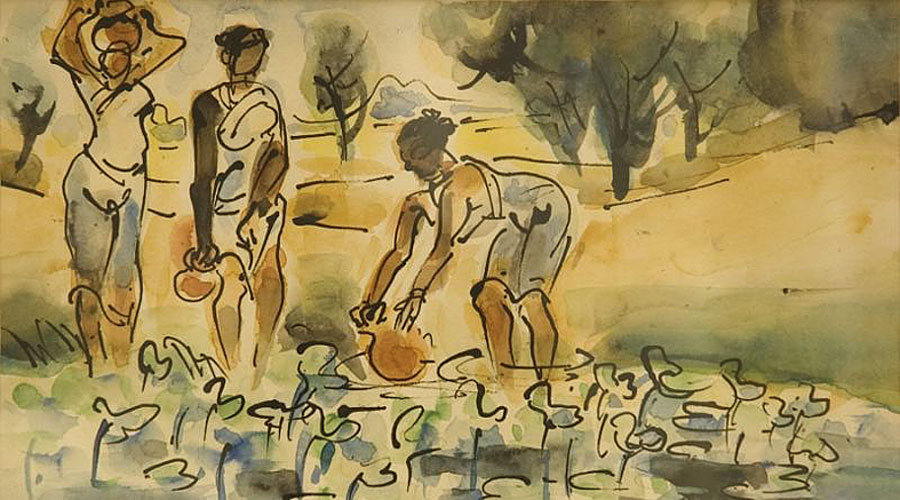The virtual tour of its Ramkinkar Baij collection that the National Gallery of Modern Art, Delhi, offers on the master’s 115th birth anniversary highlights not just the virile individualism of a pioneer of Indian modernism, but also reminds the viewer of Santiniketan’s distinctive ethos of being intimately tuned to the colloquial poetry of the Birbhum landscape and the life of its people. No wonder the three stalwarts, Nandalal Bose, Binode Behari Mukherjee and Baij, captured in their art timeless moments of everyday, rather missable magic in mundane minutiae, far from grand themes: of mythology, history and overarching isms.
And Baij (1906-1980), born in neighbouring Bankura, was plugged into the rhizosphere of his adopted home, absorbing the spare tableau of local-life, forging a close bond with the minimalist topography and its gravelly laterite soil. That’s how his celebrated Santhal Family took shape. But the sculptor is represented in this show by very few sculptures. These include Winnower, in bronze, pared down to sturdy triangles and packed with a taught energy. Another bronze that stands out for its geometric compression is Mithune II. But the work that startles one is in his favoured medium, cement, titled Famine. A craggy face, an armless torso of sharp angles, two disembodied hands and a mix of planes turn this forlorn figure of quiet dignity into a symbol of multiple narratives.

An artwork by Ramkinkar Baij NGMA
The dearth of sculptures is, however, compensated for by captivating ink and watercolour works and a few prints, both lithos and etchings. His pen revels in irrepressible scribbles of evocative brevity, so playfully child-like in the stick figures of Nature Study, while evanescent watercolour stains leap to life with breezy, rippling, elastic outlines in black. For example, Canal Diggers instantly summons up a busy, cinematic spectacle. Elsewhere, though, lines become redundant, as sweeps of the brush conjure lithe figures, as in Harvesting Couple. Or his own, recognizable profile in his Unfinished Self-portrait.
Of special interest are works grouped under the titles Structural Compositions in which form is broken down into a fluid geometry; and Absract Compositions. His capricious dalliance with the European avant garde yielded him rich dividends.











